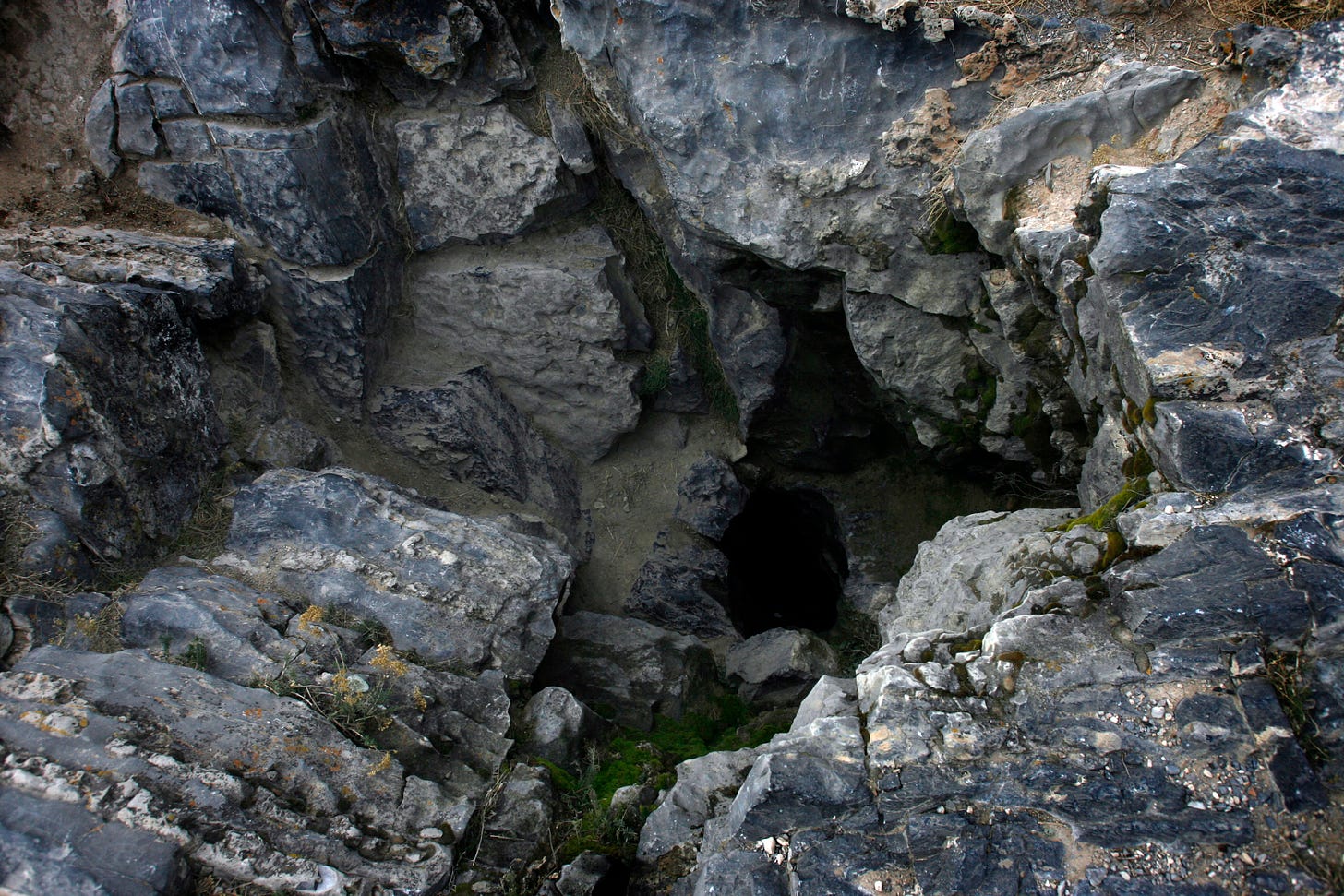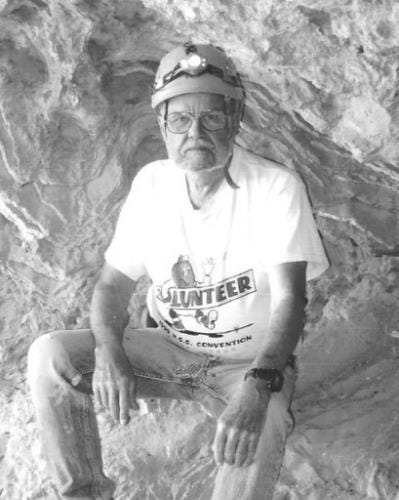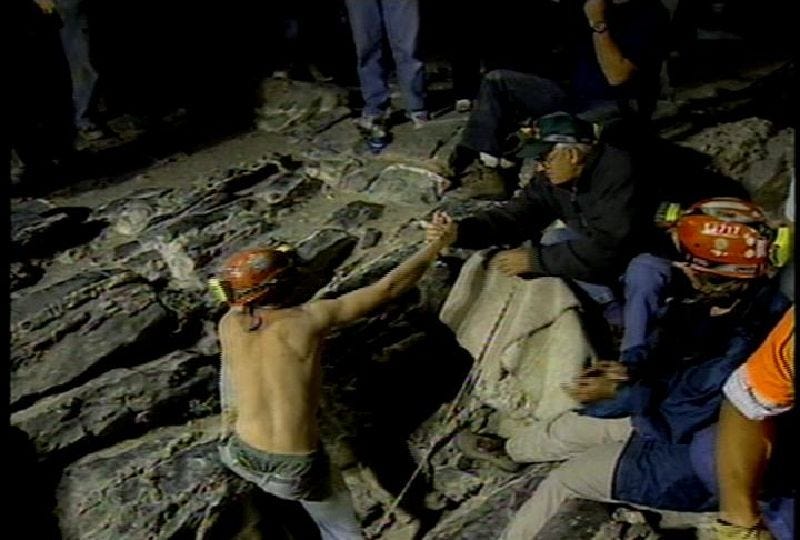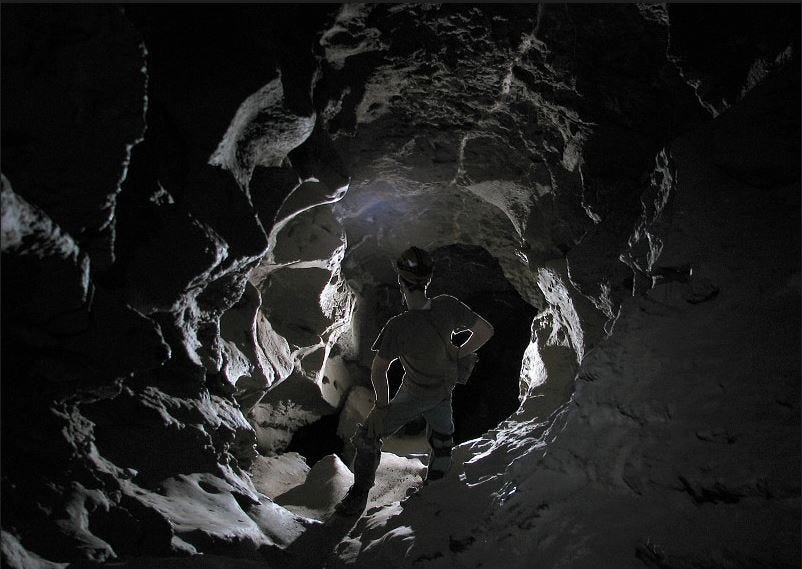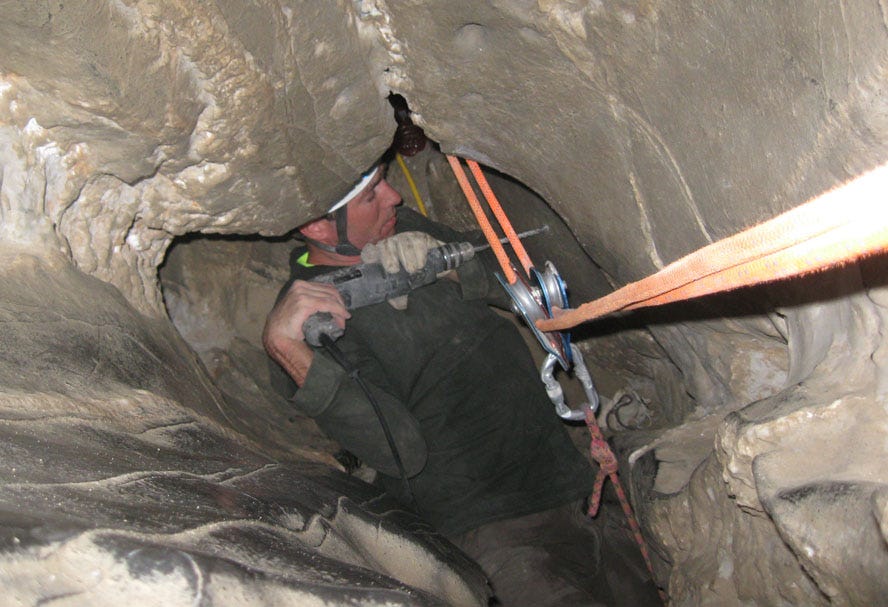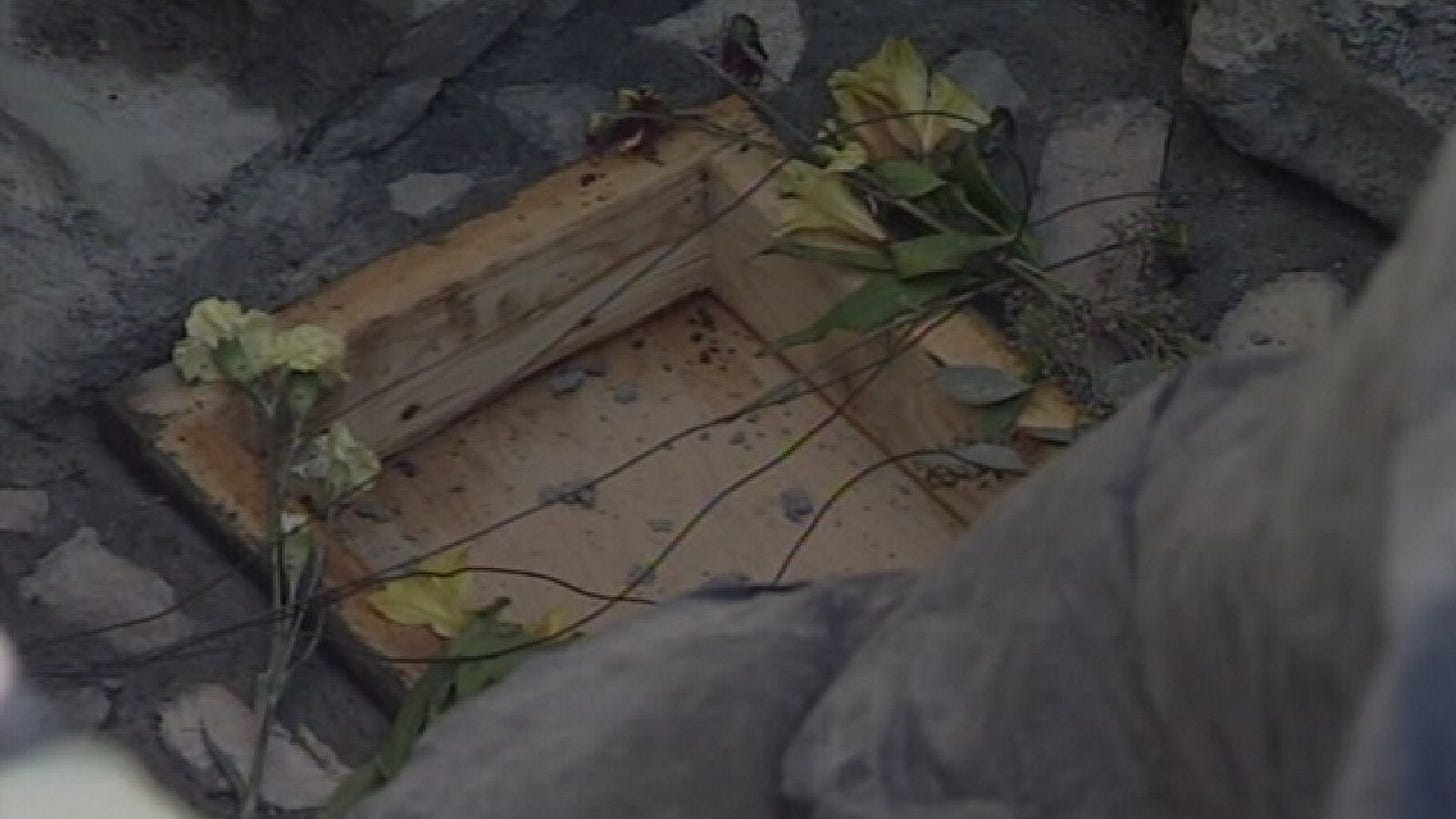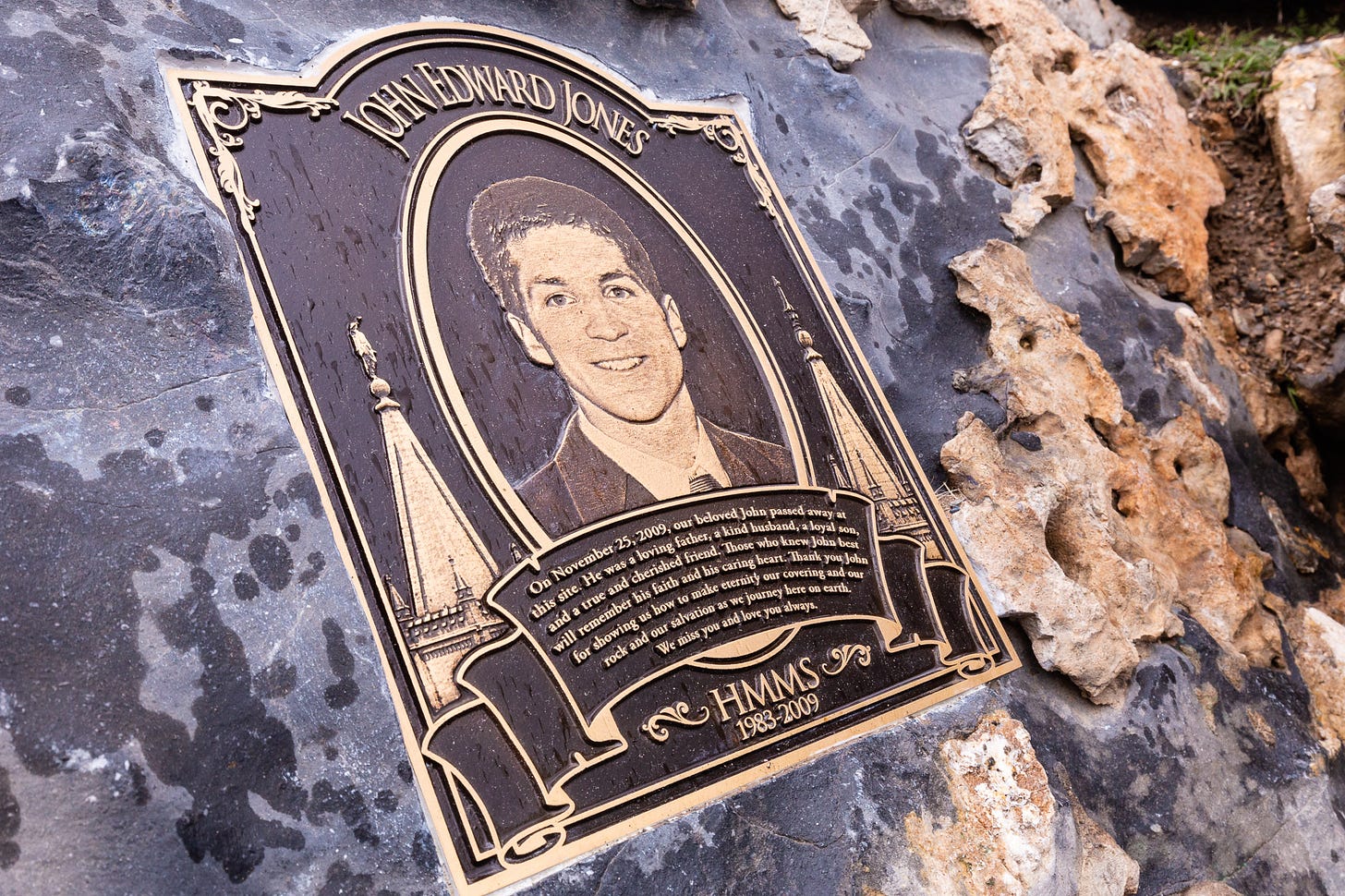The Nutty Putty Cave is located Southwest of Provo, Utah, about 10km or 6 miles from the southwestern portion of Utah Lake. The cave system has a total surveyed length of 1355 feet and reaches a depth of 145 feet. Before being closed, the cave was popular with amateur and professional cavers, or Spelunkers, as they are sometimes known. The cave is named for the putty-like brown clay found in its narrow passageways. Nutty Putty was first discovered by Dale Green and a few friends in 1960 when someone on the property reported seeing steam coming from the ground.
Most caves are formed in limestone, which, slowly over time, is eaten away by slightly acidic groundwater running down from the surface, creating cave systems. The Nutty Putty Cave is a hydrothermal cave, meaning it was formed from below by hydrothermal activity. This means superheated water is forced upward, carving out the cave system in the limestone. Traditionally, these cave systems feature many domes and three-dimensional pathways. This was true of the Nutty Putty Cave, and the larger areas of the cave system made the destination popular with beginners. A survey conducted in 2003 was able to map portions of the cave to a depth of 145 feet below the surface. Interestingly, the clay found in the cave is considered “sound active,” meaning that if you yelled in the cave, the clay would move.
The Nutty Putty Cave has a complicated history. Although it was considered a popular destination for beginners and experienced cavers, several recent incidents led explorers to get stuck in many of the caves' smaller passageways. Three of the tightest passageways in the cave were called the helmet eater, the birth canal, and the scout eater. Between 1999 and 2004, there were said to have been at least six different incidents of cavers getting stuck and requiring rescue from the cave system.
One of these incidents occurred on Thursday, July 29th, 1999, when a group of Salt Lake City teens traveled to the Nutty Putty Cave to do some exploring. They entered the cave in the early morning hours, and after spending some time in the main, larger cavities, two of the teens, Chis Hale and Chris Marrow, decided to explore the birth canal where, unfortunately, they became stuck. Marrow was on his stomach with his body slanted downward in the birth canal, and Hale was wedged behind him. Their friends managed to get help, and the two were freed by rescuers roughly 12 hours later.
Another incident occurred On August 21st, 2004, when 16-year-old Brock Clark was visiting the cave with six teenage friends. He got stuck upside down in what is reportedly close to the same area where John Jones would later meet his unfortunate fate. In this case, it took rescuers around 14 hours to free the youth, with 9 hours spent trying to straighten his leg, moving only millimeters at a time. The whole ordeal was extremely painful, and when Brock initially exited the cave, the entire left side of his body was not functioning. Brock mostly recovered but suffered nerve damage from the lack of circulation.
Due to safety concerns, the cave was closed in 2006 as officials worried that someday, one of the incidents would be fatal. After some backlash from the caving community, the cave was re-opened in 2009 with a permit system put in place. Cavers would have to apply online to reserve a visit to the cave and be accompanied by experienced cavers. In the case of the incident we are discussing, John Jones and his brother Josh were considered the experienced cavers in their group. Still, their level of experience would come into question afterward.
In November 2009, John Jones traveled from Virginia to Utah with his pregnant wife, Emily, and one-year-old daughter, Lizzie, to spend Thanksgiving with his large family and some friends. John was studying to become a pediatric cardiologist at U.Va School of Medicine. During the trip, John, his younger brother Josh, and a group of 9 other family members and friends decided to visit the Nutty Putty Cave system for a day of exploring. Neither John nor his brother Josh had visited this cave before, but they had spent much of their youth caving in other areas around Utah where they grew up. Oddly, John had acted as a trapped victim on several occasions for a Utah Cave Rescue team, a group that his father had helped found.
The group of 11, which would be considered a large group by caving standards, entered the Nutty Putty Cave at around 8 p.m. on November 9th. It had only been a few months since the cave had re-opened to the public on a permit basis. For about the first hour, everything went smoothly as the group explored the main room in the cave, called the Big Slide. Afterward, John, his brother Josh, and two friends decided to explore a section of the cave called the birth canal, as they had heard stories about how tight that section of the cave was.
John led the way down one of the narrow passageways, not realizing that he was not in the birth canal, but rather, he was working his way head-first through a section of the cave called Ed’s Push and was headed to a portion of the cave that had not yet been charted. Somewhere along the line, it seems he got slightly separated from the others, and as the tunnel got tighter and tighter, John began to realize that he would not be able to turn back on himself. John Jones was 6 feet, 200 pounds; turning around in a confined space would have proven difficult even under the best circumstances.
John’s only option was to keep pushing forward. He saw what he thought to be an open space ahead where he could turn around, but had to squeeze past a ledge to get to that area. At this point, he was facing about a 60-degree downward position as he inhaled and sucked his chest in to get past the ledge and slid head-first into a fissure. At this point, John was stuck entirely with his hands stuck down by his side in a space that was only said to be about 10 x 18” in size. To put this into perspective, a standard width for a dryer door is 32”. Imagine a 6-foot, 200-pound frame jammed upside down in a space of this size. Getting out of this space under his power would be impossible. He called for his brother, who descended the passageway feet first to find John. This is an essential detail because entering the space feet first would make it much easier to get back out. When Josh found his brother, all he could see were his feet sticking out. At first, his brother thought it was funny, thinking this would be a story they could joke about later over Thanksgiving dinner. Their father had gotten stuck in a cave and required rescue many years earlier, and Josh initially thought this would be a similar situation. Very quickly, however, the reality of the situation sunk in.
Where Josh had entered feet first, he couldn’t get a hold of his brother to try and assist him back out on the fissure. He tried to hook onto John’s feet with his own, but this attempt was futile. There was no way to get any leverage, and John was hopelessly stuck with no easy means of extraction. Josh realized he would need to leave to find help.
It took roughly three hours for help to arrive at John’s location. The first rescuer on sight was Susie Matola, an experienced cave explorer who was around 5-foot-3 with a small frame. She tied a rope to herself and entered the cave to find John. He was hundreds of feet into the cave and over a hundred feet below the surface. When she found him, she introduced herself and asked how he was doing, to which John responded, “Hi, Susie, thanks for coming, but I really, really want to get out.” Trying to comfort John, Susie explained they would have him out of there in no time.
Susie tied a rope around John's ankles, and as she did so, she started to realize how dire the situation was. She had figured out that one of his arms was by his side, and the other was pinned against his chest. He could hardly move his feet, and his head was facing down. The next rescuer to enter the cave was John Stilmar, who made his way to John to attempt to free him from the space. He pulled at John's legs while John did his best to assist in moving backward from his current position. This went on for a while with only incremental progress, and it became evident that they would need to develop another game plan.
At this time, they decided to use a pulley system. It was now 8 a.m., and hundreds of rescuers, as well as John’s wife and daughter, were at the surface. Setting up a pulley system would not be easy, and John had been upside down for over 12 hours at this point. A surgeon on-site, John Murdoch, advised the rescuers of the dangers of the situation. After only 10 hours of being upside down, a person's organs would begin to fail.
After painstakingly setting up the required pulley system, the rescuers began the process of freeing John from the cave. The first attempt at using a pulley system failed immediately due to too much friction. After modifying the pulley system, Ryan Shurtz entered the cave to tie the rope to John. They had hoped to tie it to his waist but were unable to get the access required, so they ended up tying the ropes to his feet.
At this time, they had also set up a telecom system so John could communicate with his family at the surface. Over 400 feet of cable was required to make this happen. John's wife, Emily, told John to keep fighting and that she loved him. They also tried to feed John water to keep him hydrated, but this was nearly impossible. They were running the water down John’s arms and the side of the cave, hoping he’d catch some of it in his mouth.
The press implied at this point that John was almost free from the cave, but this was not the case. Given how long John had been trapped in the cave in an upside-down position, his thoughts started becoming foggy. At one point, he had asked the rescuers why they had put him down there.
The pulley system that they had installed seemed to be working. They were also drilling away at the rock below, but getting the right tools down there was challenging, as each trip to John’s position with supplies took nearly an hour. To complicate things even further, the rock they were drilling and breaking away was falling down onto John. It was reported that they had also used vegetable oil to lubricate the cave walls and ease Johns's exit through the passageways. They even discussed breaking his legs to get him through the complex spaces.
Eight people were pulling on the pulley system in an effort to get John out, while John attempted to assist by moving around and pushing with his right arm. Each pull of the rope left him in an enormous amount of pain. John's voice was muffled because his body was larger than the space he was in, but the rescuers could hear John’s voice gurgling, meaning that fluids were starting to build up in his lungs due to the position he was in. Some progress was being made, though, and it seemed they might actually be able to get him out of there.
At this point, however, things took a turn for the worse. Ryan Shurtz, the rescuer closest to John, blacked out in pain. When we came back around, his face was bleeding, and his tongue was nearly severed. A portion of the pulley system closest to Ryan, which included a large carabiner and a pulley, dislodged from the rock wall and struck him in the face. As a result, John fell back into the fissure in the same position he had started in. Ryan told John he would have to exit the cave to get medical attention.
Ryan's dad, David Shurtz, entered the cave and made his way to John to re-secure the pulley system and make another attempt. When he reached John, he asked if he was alright, to which John replied, “I’m not going to get out of here, am I?” David assured John that they weren’t going to give up and began the process of re-assembling the pulley system. However, doing this a second time was proving to be very difficult without the right tools. At this point, David attempted to tie the rope around John’s chest and asked John to suck in his chest to assist. John was not responding. On top of this, David, too, was stuck, and it took him 15 minutes to get back out of that space and finish securing the nearest portion of the pulley system.
When they attempted to use the new pulley system to extract John one last time, it became evident that this would not work. Now unresponsive, John could not help move himself around to get through the required spaces. Things were beginning to look grim.
A medic entered the cave to check on John. Using an EKG machine, he confirmed everyone's worst fears. 27 hours after becoming stuck in the cave, John Jones was pronounced dead. Cardiac arrest was determined to be the cause of death.
After reporting this devastating news to John’s family, authorities assured them that they would extract the body the next day. Ultimately, however, it was determined that this would not be possible. That it was too dangerous, and the conditions inside the cave would lead to John’s body decomposing rapidly. The decision was made to block off the cave using two separate concrete barriers—one in the area where John’s body rested and another at the cave’s entrance.
To this day, John’s body lays over 100 feet below the surface of the nutty putty cave, and the area serves as a memorial with a plaque dedicated to John Jones and his final resting place.
The tragic tale of John Jones and the nutty putty cave incident does have a seemingly happy ending. In a later interview, John's wife, Emily, stated that John died doing something he loved and that she thought he would be happy in this final resting place. Emily Jones-Sanchez has since re-married and lives with her current husband and three kids, including John's daughter, Lizzie, and his son, John Jr.




